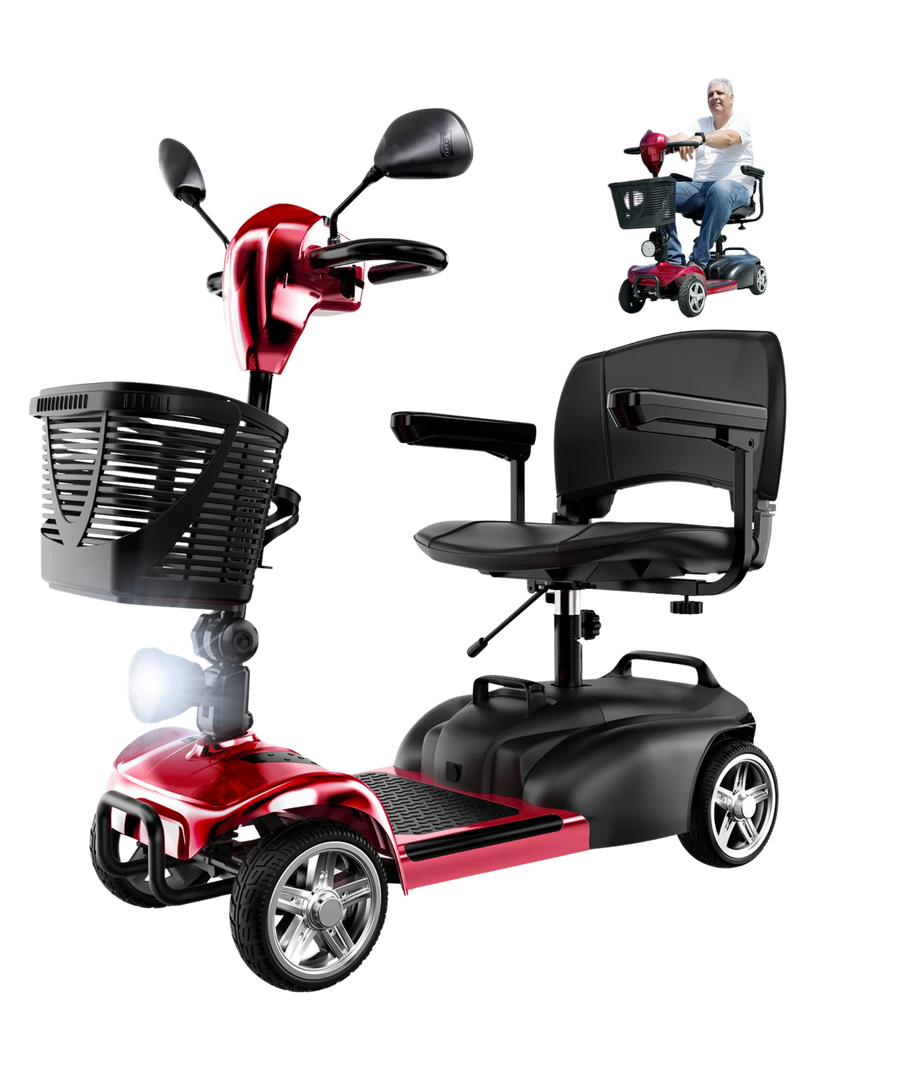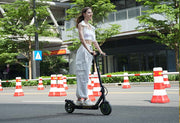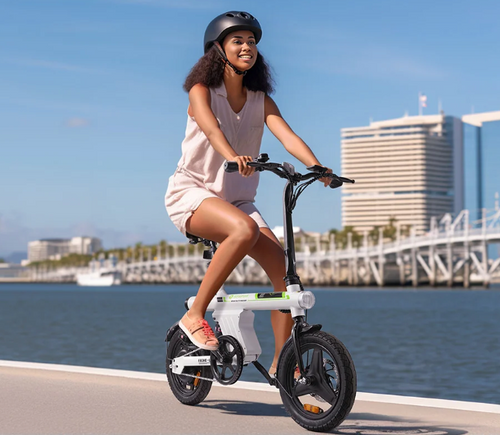
Bicycle Tire Replacement: A Step-by-Step Guide
Flat tires are one of the most common issues cyclists face, but with the right know-how, they don’t have to ruin your ride. Learning bicycle tire replacement gives you the confidence to fix a flat quickly, whether you’re at home or out on the road. This step-by-step guide will walk you through the entire process—from removing the wheel to reinstalling it—so you’ll be prepared for any flat tire situation.
Five Basic Steps on How to Replace a Bicycle Tire
1. Remove the Wheel
The first step in bicycle tire replacement is to take the wheel off the bike. If your bicycle uses rim brakes, start by releasing them so the tire can pass through without catching. This is done by squeezing the brake arms together and unhooking the cable from the brake noodle. Once the brakes are free, you can move on to releasing the wheel from the frame. Most modern bikes use a quick-release lever—simply flip it open, loosen the nut slightly, and lift the wheel out of the dropouts. If your bike has a thru-axle, use the correct hex key or handle to unscrew the axle completely before removing the wheel.
Removing the rear wheel during a bicycle tire replacement requires a little more care. First, shift your chain onto the smallest cog of the cassette, which reduces chain tension. Then, pull the derailleur arm back gently to create space, and lift the wheel up and out of the frame while guiding the chain free. Taking your time with this step will prevent damage to the drivetrain and make reinstalling the wheel easier later.
Video: Removing the Rear Wheel
For a clear demonstration, you can watch a video tutorial on “Removing the Rear Wheel for Bicycle Tire Replacement.” Seeing the process in action will give you extra confidence when handling your own bike.
2. Remove the Tube
For the next step in bicycle tire replacement, start by fully deflating the tire by pressing the valve stem until no air remains. Once the tire is flat, use a plastic tire lever to carefully unseat the tire bead—the edge of the tire that locks into the rim—by prying it upward and working around the wheel until one side is loose. With the bead released, gently pull the inner tube out, beginning at the valve stem and sliding it free from the tire.
3. Find the Cause of the Flat
Before continuing with your bicycle tire replacement, always check the inside of the tire and the rim to find the cause of the flat. Run your fingers carefully along the inner surface of the tire to feel for sharp objects such as glass, nails, or thorns that may have punctured the tube. Also inspect the rim strip to ensure it’s not damaged or out of place, as this can cause recurring flats. Removing any debris or fixing rim issues will prevent your new tube from being punctured immediately after installation.
4. Bicycle Tire Replacement vs. Tube Repair
When dealing with a flat, it’s important to decide whether you need a full bicycle tire replacement or if a simple tube repair will do. A damaged or worn-out tire, especially one with cracked sidewalls or bald tread, always requires a complete bicycle tire replacement to keep your rides safe and smooth. However, if the tire itself is still in good condition, you may only need to address the inner tube. If the tube has a small puncture, a patch kit can provide a quick and affordable fix, but larger tears or repeated flats mean it’s time for a new tube. During any bicycle tire replacement, always inspect the tire carefully and ensure the new tube is seated properly. Slightly inflating the tube before installation makes it easier to insert into the wheel and helps prevent pinching or twisting, which could cause another flat.
5. Reinstall the Wheel
Once the new tube and tire are in place, the last step in your bicycle tire replacement is to reinstall the wheel on your bike. For the rear wheel, guide the chain back onto the smallest cog, pull the derailleur arm slightly to make room, and slide the wheel into the dropouts, making sure the axle sits evenly before tightening the quick-release lever or axle nuts. For the front wheel, simply place the axle into the fork dropouts, secure it, and reconnect the brakes if needed. Always spin the wheel to confirm it rotates freely and is properly aligned. Taking care during this final stage ensures your bicycle tire replacement is safe, secure, and ready for the road.
Upgrade Your Ride: Why Choose iSinwheel E-Bikes
After handling the basics like bicycle tire replacement to keep your bike running smoothly, you may be thinking about upgrading to a ride that offers more convenience, power, and long-term reliability. That’s where iSinwheel e-bikes stand out. Designed for both daily commuters and weekend explorers, these e-bikes combine durable construction with features like removable batteries, advanced suspension, and powerful motors to give you a worry-free ride. Instead of focusing on constant maintenance and repairs, an iSinwheel e-bike lets you enjoy the road with less hassle and more performance—making every journey smoother, faster, and more enjoyable.
|
Images |
 |
 |
 |
 |
 |
 |
|
Models |
||||||
|
Peak Power |
500W |
500W |
500W |
500W |
500W |
750W (250W nominal) |
|
Battery |
36V 7.8Ah |
36V 13Ah |
36V 7.8Ah |
36V 10.4Ah |
36V 10.4Ah |
36V 10.4Ah |
|
Range |
65 km |
105 km |
65 km |
100 km |
88+ km |
88+ km |
|
Speed (before unlock) |
10/15/25 km/h |
6/10/15/20/25 km/h |
10/15/25 km/h |
6/10/15/20/25 km/h |
10/15/25 km/h |
6/10/15/20/25 km/h |
|
Speed (after unlock) |
15/25/32 km/h |
10/15/20/25/32 km/h |
15/25/30 km/h |
6/10/15/20/35 km/h |
15/25/35 km/h |
10/15/20/25/32 km/h |
|
Max Load |
120 kg |
120 kg |
120 kg |
150 kg |
120 kg |
120 kg |
|
Net Weight |
23.2 kg |
27 kg |
23.3 kg |
21.9 kg |
26.5 kg |
28.4 kg |
|
Suspension |
Rear mid shock absorber |
Front suspension |
Adjustable front fork + comfort saddle |
Hydraulic fork |
Front suspension |
Aluminum front fork |
|
Max Climb |
20% |
37% |
25% |
20% |
37% |
City slopes |
|
Tire Size |
14×1.95" |
26×1.95" |
16×1.75" |
26×1.95" |
16×2.15" |
26×1.95" |
|
Tire Type |
Pneumatic |
Pneumatic |
Pneumatic |
Pneumatic |
Pneumatic |
Pneumatic |
|
Waterproof |
IPX4 |
IPX4 |
IPX4 |
IPX4 |
IPX4 |
IPX4 |
|
Removable Battery |
No |
Yes |
No |
Yes |
Yes |
Yes |
|
Rider Height |
150–185 cm |
160–192 cm |
155–185 cm |
160–190 cm |
140–180 cm |
150–192 cm |
The Advantage of iSinwheel Over Traditional Bicycle Tire Replacement
While bicycle tire replacement is an essential skill for any cyclist, it can be time-consuming and stressful—especially if flats happen frequently. Switching to a modern iSinwheel e-bike offers a significant advantage by reducing the need for constant tire maintenance. iSinwheel e-bikes feature puncture-resistant tires, which greatly lower the chances of flats and the need for frequent bicycle tire replacement. Coupled with powerful motors that make riding effortless and advanced suspension systems for maximum comfort, these e-bikes minimize the stress of regular upkeep. Choosing iSinwheel means less time spent in repair and more time enjoying your ride, making them a smart and practical upgrade over traditional bikes.
Tips for Successful Bicycle Tire Replacement
-
Carry the right tools at all times: A set of tire levers, a spare tube, and a compact pump or CO₂ inflator are essential for quick and hassle-free bicycle tire replacement during rides. Having these on hand saves time and stress.
-
Be gentle with the tire bead: When removing or reinstalling the tire, avoid forcing it too aggressively. Using careful leverage will prevent pinching the tube, which is a common mistake during bicycle tire replacement.
-
Pre-inflate the tube slightly: Adding a little air helps the tube hold its shape and sit correctly inside the tire. This reduces the chance of twisting or folding, ensuring a smoother bicycle tire replacement process.
-
Check for hidden debris: Always inspect the inside of the tire and the rim for thorns, glass, or protruding spokes. Missing this step can cause an immediate second flat even after a complete bicycle tire replacement.
-
Inflate to the recommended pressure: Over-inflating or under-inflating can shorten the lifespan of your new tube or tire. Use a pump with a gauge to match the PSI recommended on your tire sidewall after finishing your bicycle tire replacement.
-
Practice at home: Don’t wait until you’re stuck on the road. Practicing bicycle tire replacement in a safe space builds confidence and ensures you can handle it quickly during a ride.
Conclusion
Mastering bicycle tire replacement is an essential skill for every rider. With a few tools and some practice, you can replace a tire or tube in minutes and keep your rides smooth and stress-free. And if you’d rather spend more time riding and less time repairing, upgrading to a modern iSinwheel e-bike with puncture-resistant tires can make maintenance easier than ever. Whether you choose the DIY route or an e-bike upgrade, staying prepared ensures nothing stops you from enjoying the ride.
Frequently Asked Questions
How much does it cost to get a bike tyre replaced?
The cost of a professional bicycle tire replacement varies depending on the type of tire, bike, and labor charges. On average, replacing a standard bike tire at a shop can cost between £15 and £50, including labor. High-performance tires or e-bike-specific tires, like those on iSinwheel models, may cost more.
Can you replace a bike tire yourself?
Yes — you can replace a bike tire yourself with basic tools and knowledge. Learning how to do your own bicycle tire replacement saves money and helps you handle flats quickly while riding. Tools needed include tire levers, a spare tube, and a pump. For more convenience and fewer maintenance needs, consider bikes with puncture-resistant tires, such as iSinwheel e-bikes.
How much is a bike tire replacement?
A typical bicycle tire replacement ranges from £15 to £60 when factoring in parts and labor. Prices vary based on tire size, type (road, mountain, hybrid, or e-bike tire), and whether the replacement is done at home or by a bike shop. Premium tires designed for durability and comfort, such as those used on iSinwheel e-bikes, may have a higher upfront cost but save on frequent replacements.
How much does it cost to change a bicycle tyre?
Changing a bicycle tyre at a bike shop generally costs between £20 and £50, depending on tire quality and labor charges. Doing your own bicycle tire replacement is usually less expensive — often under £20 if you already have the tools and a spare tube. Investing in puncture-resistant tires or high-quality models like iSinwheel e-bikes can significantly reduce replacement costs over time.
The Latest Posts
Explore isinwheel products
City E Scooter | Off-Road Scooter
Fastest Scooter | Kids Scooters































































Leave a comment